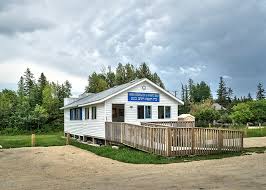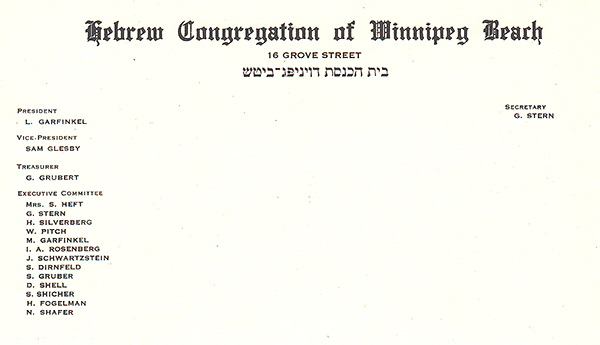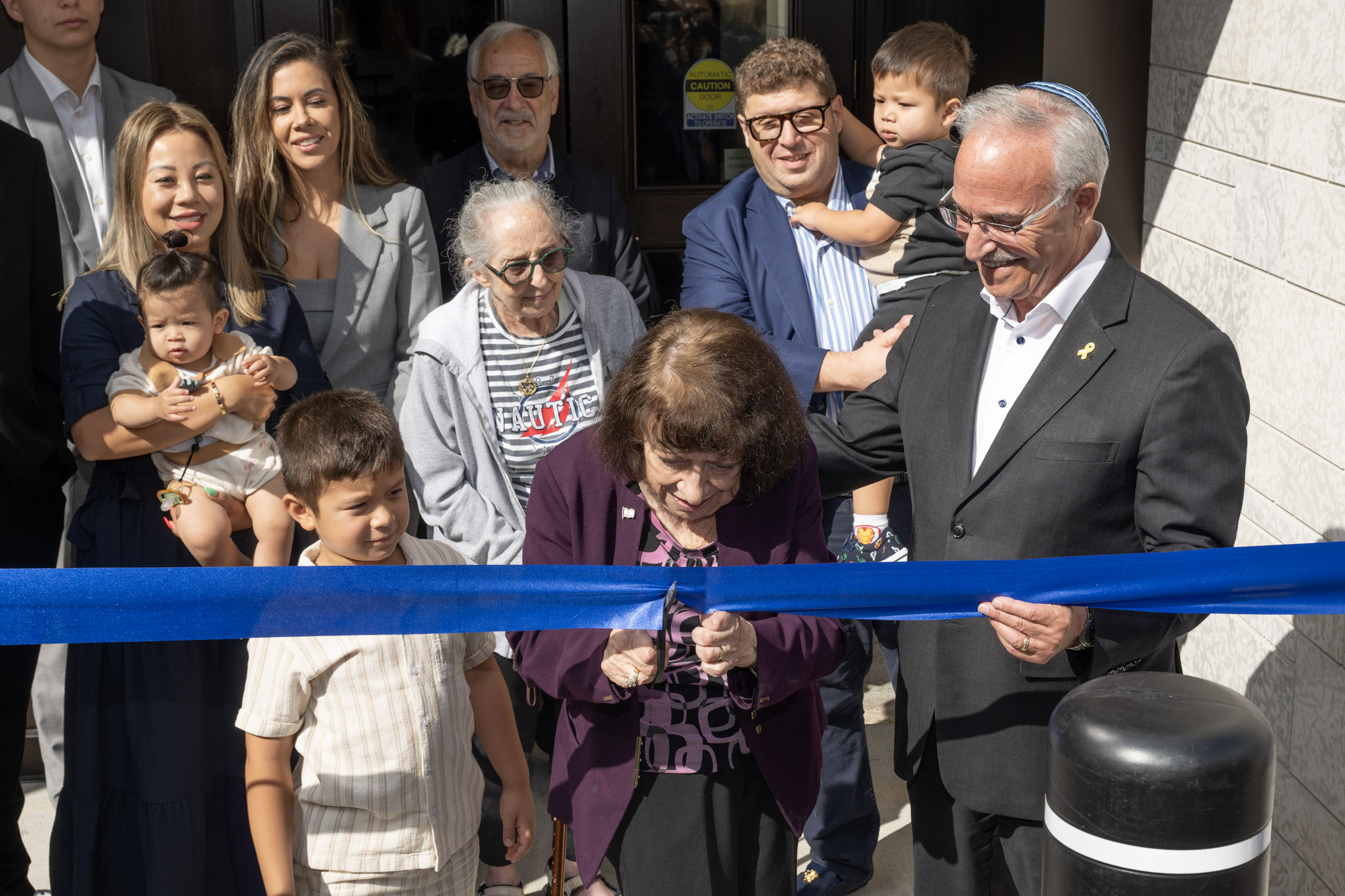Local News
Rainbow Stage’s production of Mary Poppins is pure magic

Review by BERNIE BELLAN It’s been a long time since I’ve sat through as totally enjoyable a show as Rainbow Stage’s current production of Mary Poppins. And, judging by the enthusiastic response of the full house audience on Wednesday, August 21, this particular production is probably going to go down as one of Rainbow Stage’s most successful shows ever.
I knew this show was going to be good because I had interviewed choreographer Josh Assor prior to opening night (you can watch that interview at Josh Assor interview) and Josh had told me that, while the show is not a Disney touring show per se (and Disney touring shows are well known for their magnificent production values), it does incorporate the essential elements of the version of Mary Poppins that premiered on Broadway in 2006.
Of course, Mary Poppins is a universally beloved show – even if the author of the Mary Poppins stories, P. L Travers, was not a particularly likeable person – and was very likely an antisemite (based on her having become a book reviewer for an antisemitic journal known as “The New Pioneer.” As a side note, isn’t it interesting how other celebrated authors of children’s stories, such as Roald Dahl, also turned out to be raving antisemites?)
The reason that I digress into an exploration of some of the less savoury aspects of universally beloved children’s stories is because, no matter how enchanting it was watching the Rainbow Stage version of Mary Poppins, I also bore in mind the story behind the making of the Mary Poppins movie, which involved the clash between Travers and Walt Disney, which was told in the movie, “Saving Mr. Banks.” (It has also been suggested numerous times that Disney too bore antisemitic feelings.)
But, juxtaposed against my ambivalence about loving a show for which the two individuals most responsible for its creation may have been antisemites, is the appreciation I have for the brilliance of the songwriting duo of Jewish brothers Richard and Robert Sherman.
With such classics as “Supercalifragilisticexpialidocious,” “A Spoonful of Sugar,” “Chim Chim Cheree,” and the showstopping dance number “Step in Time,” (and I apologize if I haven’t included some of your own favourites from the show, of which there are many others I could have mentioned), the music in Mary Poppins remains timeless.
And – what about those dance numbers? They ran from the hugely exuberant – as in “Supercalifragilisticexpialidocious” and “Step in Time” to the magical, as in the coming to life of the stone statue of Neleus as performed by the oh so lithe Ben Despins.
I admit that in writing this I was heavily influenced by Holly Harris’s rhapsodic review of the show, which appeared in the Saturday, August 17 issue of the Free Press, and whose background as a musician imbues her reviews with a much greater appreciation of musical excellence than someone like me could ever hope to emulate.
In all honestly I hadn’t seen Mary Poppins since it first played in theatres here in 1964. My own kids were much more into later Disney films. In fact I don’t think any of my kids have ever seen Mary Poppins.
But, being at Rainbow Stage on a gorgeous summer evening and seeing those magical sets that were designed for this show – and feeling the enormous energy that the multitalented cast put into the performance left my wife and me absolutely spellbound.
And, even though Rainbow Stage does have an enormous seating capacity (2,300 according to its website), there was hardly an empty seat to be found – from what I could see looking around. So, if you’re at all hesitating about buying tickets for this show, I would suggest not to delay a moment longer. Mary Poppins runs until September 1, so there should be opportunities to buy tickets if you haven’t already, but from what I’m told by a publicist for the show, tickets have been selling extremely fast.
One more thing: I’m always apprehensive about getting out of the Rainbow Stage parking lot, but it took amazingly little time to exit this time. It seems that Rainbow Stage has done everything absolutely right with this show.
Local News
Thank you to the community from the Chesed Shel Emes

We’re delighted to share a major milestone in our Capital Campaign, “Building on our Tradition.” Launched in November 2018, this campaign aimed to replace our outdated facility with a modern space tailored to our unique needs. Our new building is designed with ritual at its core, featuring ample preparation space, Shomer space, and storage, creating a warm and welcoming environment for our community during times of need.
We’re grateful to the nearly 1,000 generous donors who contributed over $4 million towards our new facility. A $750,000 mortgage will be retired in November 2025, completing this monumental project in just seven years.
We’re also thrilled to announce that our Chesed Shel Emes Endowment Fund has grown tenfold, from $15,000 to $150,000, thanks to you, the Jewish Foundation of Manitoba’s FundMatch program, and Million Dollar Match initiative in 2024. Our fund helps ensure that everyone can have a dignified Jewish funeral regardless of financial need.
As we look to the future, our goal remains to ensure the Chevra Kadisha continues to serve our community for generations to come. Our focus now shifts to replenishing our savings account and growing our JFM Endowment fund.
We’re deeply grateful for your support over the past several years.
It’s our privilege to serve our community with care and compassion.
With sincere appreciation,
Campaign cabinet: Hillel Kravetsky, Gerry Pritchard, Stuart Pudavick,
Jack Solomon, and Rena Boroditsky
Murray S. Greenfield, President
Local News
Winnipeg Beach Synagogue about to celebrate 75th anniversary

By BERNIE BELLAN (July 13) In 1950 a group of cottage owners at Winnipeg Beach took it upon themselves to relocate a one-room schoolhouse that was in the Beausejour area to Winnipeg Beach where it became the beach synagogue at the corner of Hazel and Grove.
There it stayed until 1998 when it was moved to its current location at Camp Massad.
On August 2nd members of the synagogue will be holding a 75th anniversary celebration.

As part of the celebration anyone who is a descendant or relative of any of the original members of the first executive committee (as seen in the photo here) is invited to attend the synagogue that morning.
If you are a relative please contact Abe Borzykowski at wpgbeachshule@shaw.ca or aborzykowski@shaw.ca to let Abe know you might be attending or for more information about the 75th anniversary celebration.
We will soon be publishing a story about the history of the beach synagogue, which is something I’ve been writing about for over 25 years.
Local News
Vickar Family cuts ribbon on new Tova Vickar and Family Childcare Centre

By MYRON LOVE In the words of Larry Vickar, the Shaarey Zedek’s successful Dor V’ Dor Campaign “is not only a renewal of the synagogue but truly a renewal movement of Jewish life in our community.”An integral part of that renewal movement was the creation of a daycare centre within the expanded synagogue. On Monday, June 23, Larry and Tova Vickar cut the ribbon, thereby officially opening the Tova Vickar and Family Childcare Centre in the presence of 100 of their family members, friends and other supporters of the project.
The short program preceding the morning ribbon-cutting began with a continental breakfast followed by a welcome by both Fanny Levy, Shaarey Zedek’s Board President, and Executive Director Dr. Rena Secter Elbaze. In Elbaze’s remarks, she noted that Larry and Tova wanted their family (including son Stephen and family, who flew in from Florida) and friends at the event to celebrate the opening of the Tova Vickar and Family Childcare Centre, “not because of the accolades, but because, as Larry put it, he hopes that their investment in the congregation will inspire others to do the same.”
“When Larry and I spoke about what this gift meant to him and the message he wanted people to take away,” she continued, “I couldn’t help but connect it to the teachings of Reb Zalman Schachter-Shalomi whose book – Age-ing to Sage-ing – changes the whole way we look at the concept of ageing and basing it on our ancestral teachings.”
She explained that his concept of “Sage-ing” is based on three key ideas – Discover your meaning and purpose; accept our mortality and think about the legacy you want to leave.
“Larry spoke about these exact concepts when we met,” she said.
Elbaze also noted the presence of Shaarey Zedek’s newly-arrived senior Rabbi Carnie Rose, former Rabbi Alan Green, and area MLAs Mike Moroz and Carla Compton.
Larry Vickar expressed his great appreciation for all those in attendance. “Tova and I are deeply moved to stand here with you today for this important milestone in our community”, he said. “We are grateful to be surrounded by all of you, the people we care about, our family and friends… you who have touched our lives and played some part in our journey.”
